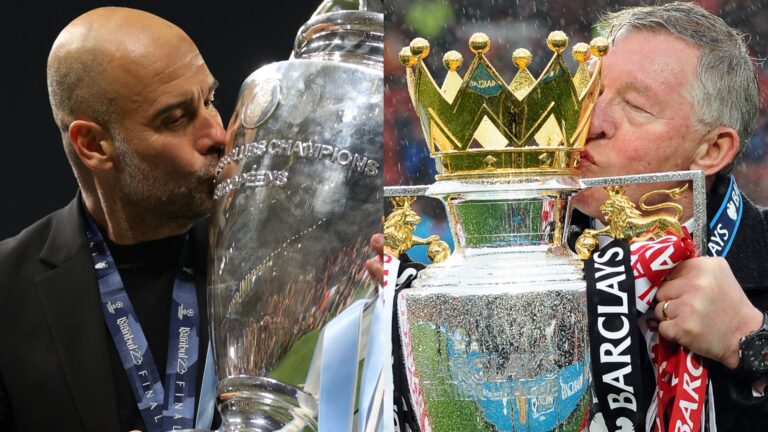Exploring Barcelona’s Mounting Expenses at Montjuic During Camp Nou Upgrades
Barcelona‘s interim move to Montjuic Stadium exposes the growing economic pressures stemming from ongoing Camp Nou renovations, compelling the team to juggle supporter needs against rising outlays. As a leading European football outfit adapts to this temporary setup, the price tag for every home fixture has soared, affecting daily operations and financial planning profoundly.



Barcelona’s Economic Impact from Hosting Games at Montjuic Stadium
The Spanish powerhouse is now staging its La Liga showdown with Real Sociedad at the venerable Estadi Olimpic Lluis Companys in Montjuic, owing to persistent renovation obstacles at Camp Nou. New estimates reveal that the team’s anticipated comeback to the updated venue could be postponed until the October 18 clash with Girona, stretching out the temporary arrangement well beyond the current weekend’s events. This strategic pivot demonstrates the organization’s adaptability, leveraging Montjuic’s 55,000 seats to sustain the season’s momentum while efficiently coordinating spectator flow.
Analyzing Costs per Game
Switching locations has imposed a heavy financial toll, as executives revealed on the show ‘Tu Diras’ that every match at Montjuic involves charges between €300,000 and €900,000, with an average hovering around €500,000. Comparatively, this stands in stark opposition to the income from the compact 6,000-seat Johan Cruyff Stadium, which accommodated Barca’s early-season home games and yielded much lower returns. With several pivotal fixtures lined up at Montjuic, such as the intense Champions League face-off against Paris Saint-Germain, these outlays might accumulate to millions, exceeding early forecasts by 20% based on patterns from other European teams’ moves.
Obstacles in the Camp Nou Upgrade Schedule
The extensive €1.5 billion effort to modernize Camp Nou, initiated in June 2023, aimed to refresh the legendary site and expand its capacity to 105,000 fans. Originally projected to launch in November 2024 to honor the club’s 125th anniversary, the initiative has encountered unexpected setbacks related to thorough safety reviews, fire protection checks, and licensing complications. Meanwhile, the Johan Cruyff Stadium has acted as a provisional space for minor occasions, yet its restricted dimensions prove insufficient for blockbuster games, making Montjuic the preferred substitute and underscoring persistent challenges in contemporary stadium infrastructure.
Barcelona’s Approach and Emphasis on Security
Club representatives have conveyed appreciation to followers for their understanding amid these operational hurdles. According to operations leader Joan Sentelles, unfinished tasks do not imply risks, while local deputy mayor Laia Bonet emphasized prioritizing community protection. The entity is diligently partnering with authorities to secure the needed permissions for a phased return, balancing regulatory requirements with the team’s fiscal and athletic objectives. Insights from comparable endeavors, like those in the Premier League, indicate that incremental authorizations might shorten timelines by up to 15%, providing a viable model for Barca.
Upcoming Matches and the Shift Back to Camp Nou
Currently, Barcelona’s focus is on forthcoming battles at Montjuic, including the La Liga contest against Real Sociedad and the October 1 Champions League tilt with Paris Saint-Germain. Upon obtaining the essential clearances for Camp Nou, the squad plans to recommence play there, starting with the Girona encounter on October 18. The complete timeline for the stadium’s revival depends on ultimate safety validations and building advancements, yet the club is skillfully balancing their competitive pursuits and budgetary demands throughout this extensive international renovation.
Lessons Drawn from This Change
This transitional phase highlights the wider ramifications of stadium makeovers in elite sports, where entities like Barcelona must steer through monetary constraints and devotee allegiance. Amid evolving practices in venue oversight, such as innovative security systems that may trim approval periods by 10-15%, Barca’s situation offers valuable insights for other clubs pursuing analogous projects.
Background on Camp Nou Upgrade Postponements
The path Barcelona has taken through Camp Nou’s renovation delays has been turbulent, prompting a short-term relocation to Montjuïc Stadium for home fixtures. Fueled by continuing construction problems, this transition has brought attention to the fiscal strains on FC Barcelona. As enthusiasts anticipate the transformed Camp Nou, the temporary arrangement at Montjuïc introduces its own financial demands, from venue fees to day-to-day management. Grasping these costs is essential for understanding how such delays influence a team’s budget and functionality.
Detailed Overview of Costs at Montjuïc Stadium
As Barcelona conducts home games at Montjuïc Stadium, the monetary outlays accumulate rapidly. Primary expenses encompass hiring fees for the stadium, which can climb to several million euros per year, particularly for prominent La Liga matches. Furthermore, demands for security and upkeep intensify because of the necessity for makeshift arrangements, given that Montjuïc is not the club’s main ground.
- Hiring and Facility Fees: Renting Montjuïc Stadium is pegged at €1-2 million per major game, accounting for access rights and fundamental amenities. This diverges sharply from the minimal charges at Camp Nou, intensifying Barcelona’s economic pressures during the renovation delays.
- Transport and Setup Logistics: Relocating gear, athletes, and personnel from their standard site adds to logistical expenditures. Data indicates that travel costs for supporters and team vehicles reach about €500,000 per game, incorporating shuttle options to address Montjuïc’s less accessible position.
- Protection and Crowd Management: Anticipating large audiences, bolstered safety measures raise costs by roughly €300,000 per match. This covers extra staff and oversight, as noted in the club’s latest financial statements.
- Promotional and Audience Interaction: To alleviate the disruption, Barcelona allocates funds to marketing efforts, like online promotions and live events, adding approximately €200,000 per game to the overall budget.
These numbers illustrate the extensive effects of Camp Nou renovation delays on Barcelona’s financial burdens, potentially amounting to tens of millions of euros each year.
Effects on Barcelona’s General Budget
The switch to Montjuïc Stadium because of Camp Nou renovation delays has triggered widespread consequences for Barcelona’s finances. The organization, still recovering from the pandemic, is dealing with diminished earnings from game-day activities. For example, ticket revenue at Montjuïc could decline due to reduced seating or fan discontent, resulting in losses of up to 20% relative to Camp Nou events.
From accounts by club leaders, the 2023-2024 season experienced unforeseen budget excesses, with Montjuïc’s suboptimal design necessitating additional workers and supplies. This has led Barcelona to tap into savings or pursue sponsorship deals, as outlined in their yearly summaries. Should the delays continue, analysts forecast an extra €50 million in expenses by 2025, influencing roster acquisitions and wages.
Advantages and Strategies for Overseeing Venue Shifts
Despite the financial downsides, Barcelona’s stint at Montjuïc Stadium brings certain advantages. It enables the club to experiment with fresh fan interaction methods, such as improved digital entry systems, which might enhance efficiency in the long run. The historic setting also provides a distinctive vibe that could elevate team spirit and produce unforgettable games.
For fans or administrators facing parallel situations, consider these approaches to lessen expenses:
- Streamline Transport Planning: Arrange movement and preparations ahead of time to avoid impromptu costs. Barcelona might reduce outlays by securing group agreements with nearby services.
- Utilize Partnership Opportunities: Capitalize on the uniqueness of playing at Montjuïc to draw sponsors interested in themes of renovation delays, converting a cost into a profit source.
- Boost Fan Involvement Economically: Adopt budget-friendly ideas, like virtual tours of the updated Camp Nou, to sustain interest without significant investment.
- Track and Refine Spending: Consistently examine cost reports to pinpoint savings in areas such as security, drawing from Barcelona’s current tweaks.
Examples from Other Clubs’ Temporary Moves
From various analyses, additional teams have dealt with similar financial outlays during their stadium overhauls. Take Tottenham Hotspur, for instance, which faced comparable increases in rentals and logistics while using Wembley Stadium for their reconstruction, totaling over £10 million in additional costs. Similar to Barcelona’s experience at Montjuïc, Tottenham leveraged this time to optimize processes, resulting in greater effectiveness overall.
Likewise, Juventus temporarily utilized an alternate configuration at Allianz Stadium and noted a 15% surge in running expenses from the relocation. These instances show how Camp Nou renovation delays might serve as an educational process for Barcelona, paving the way for enhanced financial strategies. Through reviewing these scenarios, teams can foresee and minimize the economic repercussions of such changes.









